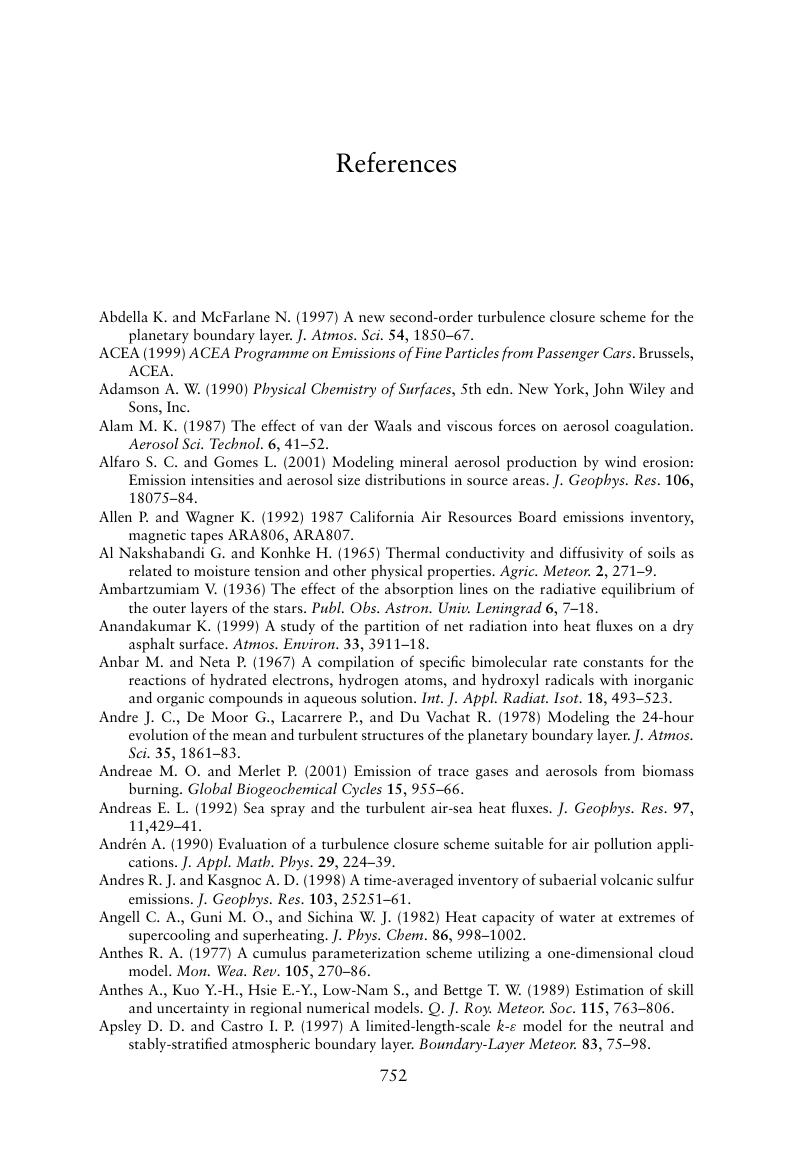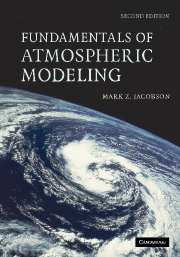Book contents
- Frontmatter
- Contents
- Preface
- Acknowledgments
- 1 Introduction
- 2 Atmospheric structure, composition, and thermodynamics
- 3 The continuity and thermodynamic energy equations
- 4 The momentum equation in Cartesian and spherical coordinates
- 5 Vertical-coordinate conversions
- 6 Numerical solutions to partial differential equations
- 7 Finite-differencing the equations of atmospheric dynamics
- 8 Boundary-layer and surface processes
- 9 Radiative energy transfer
- 10 Gas-phase species, chemical reactions, and reaction rates
- 11 Urban, free-tropospheric, and stratospheric chemistry
- 12 Methods of solving chemical ordinary differential equations
- 13 Particle components, size distributions, and size structures
- 14 Aerosol emission and nucleation
- 15 Coagulation
- 16 Condensation, evaporation, deposition, and sublimation
- 17 Chemical equilibrium and dissolution processes
- 18 Cloud thermodynamics and dynamics
- 19 Irreversible aqueous chemistry
- 20 Sedimentation, dry deposition, and air–sea exchange
- 21 Model design, application, and testing
- Appendix A Conversions and constants
- Appendix B Tables
- References
- Index
- References
References
Published online by Cambridge University Press: 05 June 2012
- Frontmatter
- Contents
- Preface
- Acknowledgments
- 1 Introduction
- 2 Atmospheric structure, composition, and thermodynamics
- 3 The continuity and thermodynamic energy equations
- 4 The momentum equation in Cartesian and spherical coordinates
- 5 Vertical-coordinate conversions
- 6 Numerical solutions to partial differential equations
- 7 Finite-differencing the equations of atmospheric dynamics
- 8 Boundary-layer and surface processes
- 9 Radiative energy transfer
- 10 Gas-phase species, chemical reactions, and reaction rates
- 11 Urban, free-tropospheric, and stratospheric chemistry
- 12 Methods of solving chemical ordinary differential equations
- 13 Particle components, size distributions, and size structures
- 14 Aerosol emission and nucleation
- 15 Coagulation
- 16 Condensation, evaporation, deposition, and sublimation
- 17 Chemical equilibrium and dissolution processes
- 18 Cloud thermodynamics and dynamics
- 19 Irreversible aqueous chemistry
- 20 Sedimentation, dry deposition, and air–sea exchange
- 21 Model design, application, and testing
- Appendix A Conversions and constants
- Appendix B Tables
- References
- Index
- References
Summary

- Type
- Chapter
- Information
- Fundamentals of Atmospheric Modeling , pp. 752 - 783Publisher: Cambridge University PressPrint publication year: 2005



